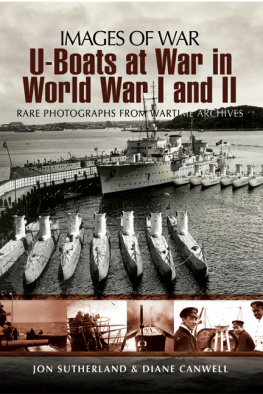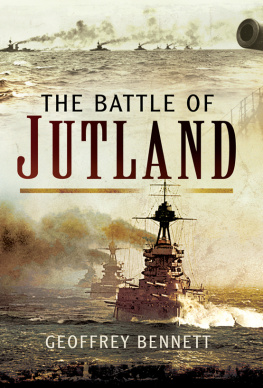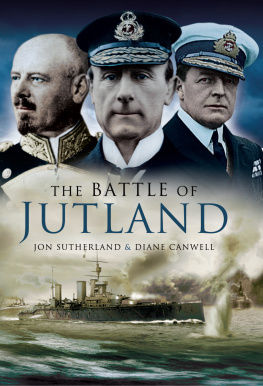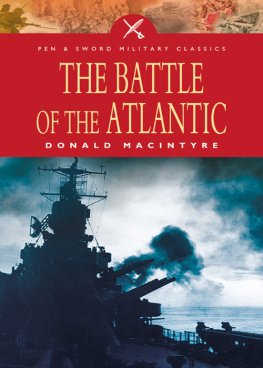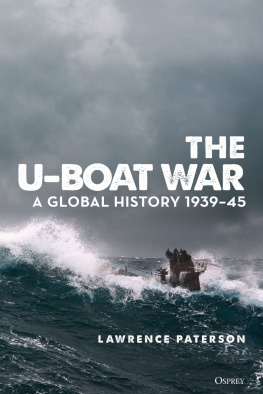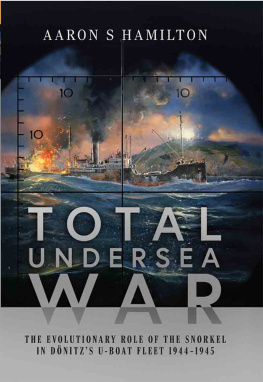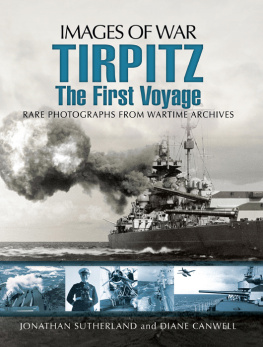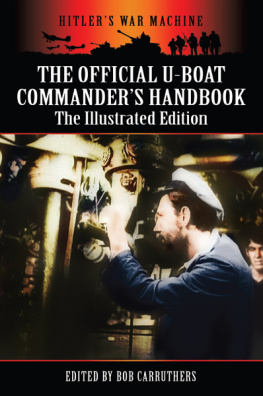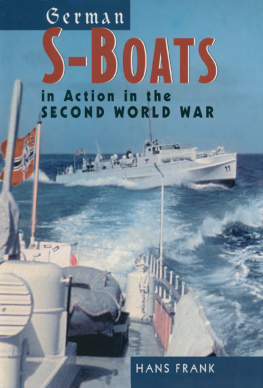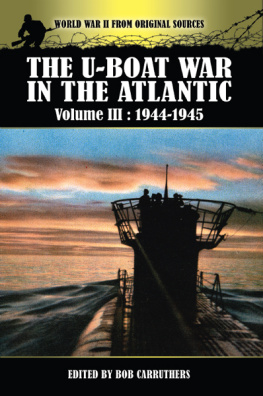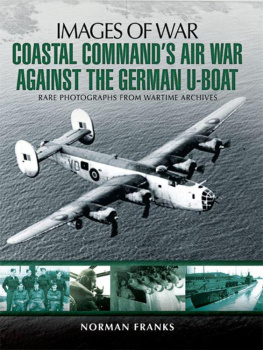

First published in Great Britain in 2009 by
PEN & SWORD MARITIME
an imprint of
Pen & Sword Books Ltd,
47 Church Street,
Barnsley,
South Yorkshire.
S70 2AS
Copyright Jon Sutherland and Diane Canwell, 2009
A CIP record for this book is available from the British Library.
ISBN 978 1 84884 0454
eISBN 978 1 78303 8671
The right of Jon Sutherland and Diane Canwell to be identified as Authors of this Work has been asserted by them in accordance with the Copyright, Designs and Patents Act 1988.
All rights reserved. No part of this book may be reproduced or transmitted in any form or by any means, electronic or mechanical including photocopying, recording or by any information storage and retrieval system, without permission from the Publisher in writing.
Typeset by S L Menzies-Earl
Printed and bound by CPI UK
Pen & Sword Books Ltd incorporates the Imprints of
Pen & Sword Aviation, Pen & Sword Maritime, Pen & Sword Military,
Wharncliffe Local History, Pen & Sword Select, Pen & Sword Military
Classics, Leo Cooper, Remember When, Seaforth Publishing and
Frontline Publishing.
For a complete list of Pen & Sword titles please contact
Pen & Sword Books Limited
47 Church Street, Barnsley, South Yorkshire, S70 2AS, England
E-mail: enquiries@pen-and-sword.co.uk
Website: www.pen-and-sword.co.uk
Contents
Imperial-Metric Unit Conversion
1 inch (in.) = 0.0254 metre (m)
1 foot (ft) = 0.3048 metre
1 yard (yd) = 0.9144 metre
1 mile = 1.6093 kilometre (km)
1 ton (t) = 0.907 tonne (te)
Introduction
The submarine, or as the Germans would refer to it, Unterseeboot ( U-Boot ), and hence the anglicised U-boat, was originally designed, of course, as a vessel for under-water exploration. The original design is believed to have been created in 1620 by Cornelius Drebbel, a Dutchman working for King James I. One hundred and fifty years later it had been transformed into a weapon of warfare. Turtle was used during the American War of Independence. Submarines were also used during the American Civil War, but it was at the end of the nineteenth century that the submarine came of age in terms of development. Diesel-electric propulsion and the periscope all made the submarine, or U-boat, a viable tool of war.
At around the beginning of the twentieth century, tests were under way using internal combustion engines for surface movement, and electrical battery power for work undersea. Large numbers of submarines were ready to be deployed when the First World War broke out in August 1914. As in a the Second World War, in terms of personnel involved and vessels deployed, submarines had a disproportionate impact both in real and in psychological terms. Both naval and merchant shipping were in grave danger, and both the British and the Germans in particular, in each war, used these vessels in an attempt to starve one another of food and resources.
Enormous steps forward were made between the wars. The submarine, equipped with a small seaplane, became a vital reconnaissance unit ahead of a surface fleet. Although the Germans had a limited surface fleet in line with the restrictions of the Treaty of Versailles, they had the largest submarine fleet. They confidently expected to beat the Royal Navy through undersea warfare.
As in the First World War, the hunting grounds were the Atlantic, the North Sea and even more remote locations. In the Second World War the Germans created wolf packs that literally hunted and destroyed whole convoys and their escorts. Until 1943 they had unprecedented success, but sonar and radar advances, along with the breaking of German naval codes and the ability to detect their radio transmissions, were to lead to enormous German losses. This would pave the way for the amphibious attacks on enemy-occupied Africa and Europe in Operations Torch, Husky and Overlord.
While the British tended to use their submarines in a blockading role, the Germans, as we will see in both wars, used them as an offensive arm, hunting and destroying armed and civilian vessels alike, and often vessels of neutral powers. A contributory factor to the USA entering the First World War in 1917 was the sinking of RMS Lusitania . Although it was a British vessel, and in later years was also believed to have been a blockade runner carrying munitions, its destruction off the coast of Ireland by U-20 was universally condemned as a war crime, and helped galvanise US public support behind President Woodrow Wilson.
For the first time a unique collection of photographs from the First World War of U-boats in action, belonging to Friedrick Pohl, a warrant officer who served on U-25 and U-33 , is now being featured, along with photographs taken by the highly successful U-boat commander, Otto Wnsche. Wnsche commanded four different U-boats between 1914 and November 1918 ( U-25 , U-70 , U-97 and U-126 ).
There are also two collections of unique Second World War photographs, the first from the collection of Gnther Prien, who commanded U-47 until he and his crew were lost in March 1941. The second collection formerly belonged to Herbert Brninghaus. Although he commanded three different U-boats between 1941 and 1943, Brninghaus did not undertake any combat patrols. However, his collection of photographs provides a fascinating account of life in the German Kriegsmarine during a period where the German navy was the least prepared for the war in 1939, yet achieved remarkable results against overwhelming odds.
We are indebted to the owner of these albums, James Payne, for his permission to use them in this photographic record of German U-boat warfare and Kriegsmarine life across two world wars. They were wars in which the men operating in these vessels often served for weeks or months without a break in near-impossible conditions, constantly hunted and in the certain knowledge that if they were discovered and were unable to surface and surrender then death was inevitable. In the First World War alone, of the approximately 360 German U-boats that had been constructed over half had been lost, but they managed to account for over eleven million tons of shipping sunk.
As in the First World War, German U-boat crews proved that eighty or so men could do far more damage at a fraction of the cost than over a thousand men on a battleship during the Second World War. Although they had limited underwater speed, endurance and range, they were significantly better underwater performers than their First World War counterparts. Their contribution was enormous to the German war effort; they were led by Admiral Karl Dnitz, who himself had been a U-boat captain in the First World War. Indeed so successful were his tactics that U-boats presented an even graver threat to Britain and her ability to continue to resist and ultimately strike back than the Luftwaffe .
Throughout the Second World War, at a cost of around 800 U-boats, a staggering 80% of all of those in operation, or two-thirds of the total production, had sunk 14.5 million tons of shipping. Or to put a more personal face on it, they had terrorised 3,000 crews by destroying their ships.
The German surface fleet during the Second World War was comparatively far weaker than it had been in the First World War. It neither attempted, nor was it given the opportunity, to challenge the dominance of the Royal Navy. It would have been a very short and bloody engagement that the Germans could not possibly have won. But by switching to submarine warfare, the Germans could range far and wide across the Atlantic, into the northern seas and slip into the Mediterranean and beyond, hunting for prey and turning them from the hunted to the hunter. These photographs tell part of these remarkable mens story the dark raiders, the stealthy predators of the sea, who rarely gave and rarely received mercy.
Next page
